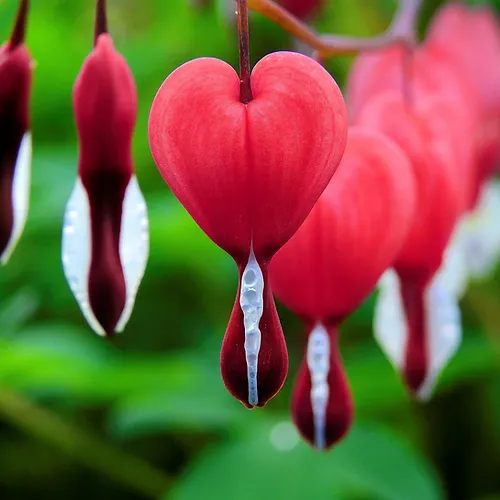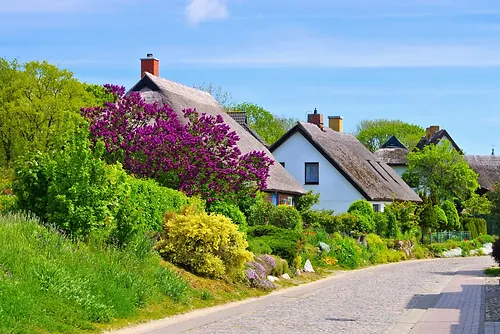The Halls Hardy Almond tree, known for its hardiness and delectable nuts, is a delightful addition to any garden or orchard. With its ability to thrive in challenging conditions and its bountiful harvest, this tree has captured the attention of nut enthusiasts and gardeners alike. In this article, we delve into the characteristics, cultivation tips, and culinary delights offered by the Halls Hardy Almond tree.

Characteristics of the Halls Hardy Almond Tree:
Resilience and Adaptability:
The Halls Hardy Almond tree (Prunus dulcis) is renowned for its resilience and adaptability to various climates and soil conditions. This tree is known to withstand colder temperatures compared to other almond varieties, making it an excellent choice for regions with harsh winters.
Self-Fertility and Pollination:
One of the distinct features of the Halls Hardy Almond tree is its self-fertility, meaning it can produce almonds without relying on cross-pollination from other almond trees. However, planting another almond variety nearby can enhance the overall yield and ensure optimal pollination.
Nut Quality and Flavor:
The almonds produced by the Halls Hardy Almond tree are a true delight for nut enthusiasts. They possess a rich, buttery flavor and a satisfying crunch. These nuts are highly versatile and can be enjoyed raw, roasted, or incorporated into a variety of culinary creations.
Cultivation Tips for Halls Hardy Almond Trees:
Site Selection and Soil Requirements:
When planting a Halls Hardy Almond tree, choose a site that receives full sun exposure for optimal growth and nut production. The tree thrives in well-drained soil with a pH level between 6.0 and 7.5. Adequate soil preparation, including organic matter incorporation, can enhance the tree’s overall health and productivity.
Pruning and Training:
Regular pruning helps maintain the shape, health, and productivity of the Halls Hardy Almond tree. Prune during the dormant season to remove dead or diseased branches and promote better air circulation within the canopy. Training the tree to a central leader or open-vase shape allows for optimal light penetration and nut development.
Watering and Fertilization:
Established Halls Hardy Almond trees are relatively drought-tolerant, but regular watering is crucial during dry periods, especially when the tree is flowering and nut development is underway. Applying a balanced fertilizer in early spring and late summer can provide essential nutrients for vigorous growth and abundant almond production.
Culinary Delights with Halls Hardy Almonds:
Raw and Roasted Almonds:
Enjoy the natural goodness of Halls Hardy almonds by indulging in them raw or lightly roasted. Their delicate flavor and crisp texture make them a perfect snack on their own or added to trail mixes, salads, or granola.
Culinary Creations:
Halls Hardy almonds can elevate a wide range of culinary creations. From almond-crusted chicken to almond butter, almond milk, or almond-infused desserts like almond cakes or cookies, these versatile nuts add a delightful nuttiness and texture to various dishes.
The Halls Hardy Almond tree stands as a testament to nature’s resilience and the joy of cultivating your own nut-bearing tree. With its ability to thrive in challenging conditions, self-fertility, and delectable almond harvests, this tree holds great appeal for nut enthusiasts and gardeners alike. Whether you enjoy the nuts raw, roasted, or in culinary creations, the Halls Hardy Almond tree offers a delightful and satisfying nutty experience. Consider planting this hardy and rewarding tree in your garden or orchard, and embrace the joy of growing your own delicious almonds.
The Halls Hardy Almond Tree: Pros and Cons
The Halls Hardy Almond Tree, a peach-almond cross, has been a topic of interest for those considering growing almond trees, especially in regions like the Pacific Northwest. Here’s a summary of the pros and cons based on the information from the provided source:
Pros of the Halls Hardy Almond Tree
- Late Blooming: This variety blooms late, which can be advantageous in avoiding late frost damage, a common issue in certain climates.
- Disease Resistance: The Halls Hardy Almond Tree is noted for its resistance to fungal diseases, making it a more resilient choice for growers.
- Self-Pollination: Unlike some other almond varieties, it is self-pollinating, which simplifies the cultivation process as it doesn’t require another tree for pollination.
- Unique Flavor: The almonds from this tree have a distinct flavor, reminiscent of almond extract, which sets them apart from other varieties.
Cons of the Halls Hardy Almond Tree
- Hard Shell: The nuts have a thick, hard shell, similar to a peach pit, making them difficult to crack and process.
- Potential Toxicity: The almonds have a strong aroma of benzaldehyde, indicating the presence of amygdalin, which can convert to cyanide in the intestines. This raises concerns about potential toxicity, especially if consumed in large quantities.
- Limited Yield: The yield from the tree can be relatively small, especially in the initial years after planting.
- Labor-Intensive Processing: Due to the hard shell, processing these almonds can be labor-intensive and time-consuming, requiring tools like hammers and potentially damaging kitchenware.
Questions and Answers About the Halls Hardy Almond Tree
How long does it take for a Halls Hardy Almond Tree to start producing nuts? The Halls Hardy Almond Tree typically begins to bear nuts within 3 to 5 years after planting. This timeframe can vary depending on factors like planting conditions, tree health, and climate.
Is the Halls Hardy Almond Tree suitable for colder climates? Yes, one of the notable advantages of the Halls Hardy Almond Tree is its suitability for colder climates, including the Pacific Northwest. Its late blooming nature helps it avoid damage from late frosts, making it a viable option for regions with cooler temperatures.
Can I eat the almonds from a Halls Hardy Almond Tree raw? While the almonds from a Halls Hardy Almond Tree are edible, they contain amygdalin, which can convert to cyanide in the intestines. It’s important to consume them in moderation. Additionally, due to their hard shells, these almonds are often more difficult to process and consume compared to other varieties.
Do I need to plant more than one Halls Hardy Almond Tree for pollination? No, one of the benefits of the Halls Hardy Almond Tree is that it is self-pollinating. This means you don’t need to plant multiple trees for them to bear fruit, which can be a significant advantage in terms of space and maintenance.
What are the main challenges of growing a Halls Hardy Almond Tree? The main challenges include dealing with the hard, peach pit-like shell of the nuts, which makes them difficult to crack, and the potential toxicity due to the presence of amygdalin. Additionally, the yield can be relatively small, especially in the early years.
How do I care for a Halls Hardy Almond Tree? Caring for a Halls Hardy Almond Tree involves regular watering, especially during dry periods, ensuring it’s planted in well-draining soil, and providing adequate sunlight. Pruning and protecting the tree from pests and diseases are also important for its overall health and productivity.
Further Reading on Tree Care and Gardening at Buy Trees For Sale
Buy Trees For Sale offers a diverse range of articles focusing on tree care, gardening, and ornamental plants. Here are some articles that you might find particularly interesting:
- Liriope: The Ideal Ornamental Grass for Online Plant Shoppers: This article discusses the benefits of Liriope as an ornamental grass, perfect for those looking to enhance their garden’s aesthetic through online plant shopping.
- Bridal Falls Hosta: A Cascade of Beauty in Your Garden: Explore the unique beauty and characteristics of the Bridal Falls Hosta, a plant that can add a touch of elegance to any garden.
- Strawberry Vanilla Hydrangea Trained to Grow Like a Tree: Learn about the Strawberry Vanilla Hydrangea and how it can be trained to grow like a tree, offering a stunning floral display in your garden.
These articles provide valuable insights and tips for gardening enthusiasts and those interested in enhancing their outdoor spaces. Whether you’re a seasoned gardener or just starting out, Buy Trees For Sale is a great resource for information on a wide range of plants and trees.
As an Amazon Associate we earn from qualifying purchases through some links in our articles.




